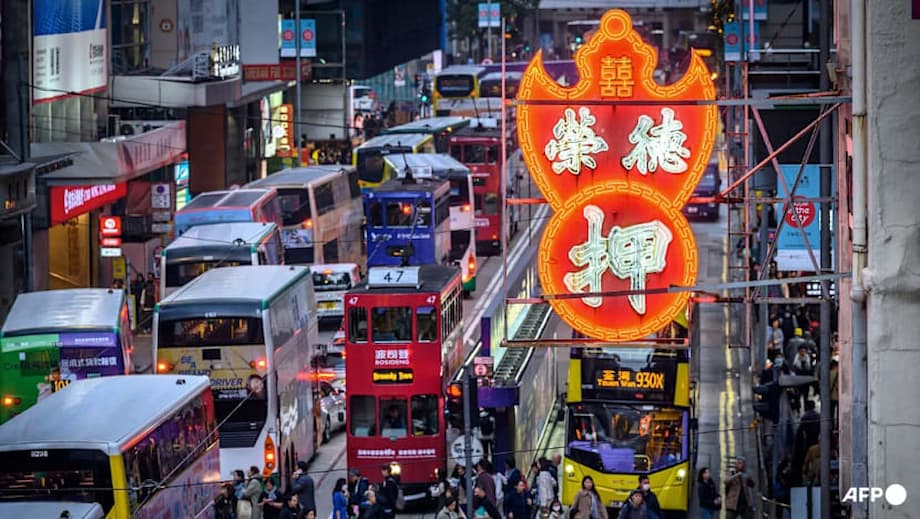A comeback with contradictions
Four turbulent years reshaped Hong Kong. The 2019 unrest, the national security law in 2020, and prolonged pandemic controls triggered an exodus of talent and companies. Many outsiders concluded the city had lost the edge that made it a bridge between East and West. Yet the narrative has shifted again in 2025. Capital is returning, markets are lively, and the city is attracting skilled workers at a pace not seen in years. The revival is real, but it is uneven, and it raises a strategic question that touches every sector of the economy: is Hong Kong restoring its old identity as Asia’s world city, or settling into a new role as China’s global-facing springboard?
Stock listings and corporate deal flow are a key driver of confidence. Beijing’s stimulus push in late 2024 primed mainland companies to raise capital, and Hong Kong is the natural venue. The first half of 2025 saw HK$107.1 billion in initial share sales, seven times the tally in the same period of 2024. Forecasts point to Hong Kong finishing 2025 among the most active listing markets worldwide. Visitor arrivals have rebounded, led by mainland travelers who now comprise a large majority of inbound trips. Streets feel busy again, while the airport and trains hum as regional connectivity recovers.
Scratch the surface, and the contradictions appear. Some luxury segments, especially jewellery and watches, are thriving thanks to tourist spending. Other parts of retail and dining struggle with high rents and fierce competition from cheaper options across the border. Global companies still prize the city for its legal system, currency convertibility, and financial depth. Yet geopolitical risk and questions about openness remain part of boardroom discussions. This mixed picture is shaping a new phase in Hong Kong’s story.
What the numbers say
Recent metrics capture the shift. A leading benchmark of financial hubs places Hong Kong third globally, behind only New York and London. The index, informed by professional assessments and over one hundred factors, reflects a stronger business environment, deeper markets, and improved human capital. That ranking also underscores Hong Kong’s primacy in Asia, where it edges Singapore in the latest edition.
Fundraising momentum has turned decisively. Professional services firms count a surge of new listings, with analysts expecting 2025 to be the strongest year for Hong Kong’s share sales since before the pandemic. Mainland companies dominate the pipeline. They already account for roughly 60 percent of firms on the exchange and more than 80 percent of its market value. The stock market has rallied on improved sentiment about China and attractive valuations, even if it remains below peaks reached in the previous decade.
Talent indicators are also moving. In a widely watched global ranking, Hong Kong jumped to fourth place worldwide for talent competitiveness, the highest reading on record for the city. The government has approved hundreds of thousands of applications under new talent schemes since 2022, helping to refill the workforce after pandemic-era losses. Corporate leaders say dealmakers and lawyers are busier than they have been in years, and recruitment markets show a broader range of candidates willing to relocate.
Tourism is recovering in fits and starts. Visitor counts have climbed sharply from the doldrums, with mainland travelers making up close to four in five arrivals in recent months. Hospitality, transport, and attractions have geared up accordingly. The international aviation hub is rebuilding capacity and long haul links, while carriers expand service to the mainland and Southeast Asia to capture connecting demand.
Is Hong Kong still Asia’s world city
The brand that defined the city since 2001 promised a cosmopolitan gateway where common law, low taxes, free capital flows, world class infrastructure, and a bilingual workforce came together. For decades, that formula worked. The port and the airport were top ranked, global banks made Hong Kong their Asia headquarters, and the stock exchange became a leading venue for China related finance.
Brand origins and evolution
When the government launched Brand Hong Kong in 2001, it leaned on attributes identified through local and international research: enterprising, innovative, diverse, cosmopolitan. The signature red dragon mark sought to signal confidence and connectivity. The pitch was simple and powerful. Hong Kong was a place where global capital met Chinese opportunity under one country, two systems. The last five years tested that promise. Tighter security laws, bruising US China relations, and the pandemic shook confidence and triggered departures. The question now is how much of the original brand can be preserved as the city integrates more closely with the mainland economy.
The mainland factor
Hong Kong’s engine is tightly linked to the mainland. The exchange attracts Chinese technology, consumer, and industrial champions seeking international investors and currency. The Connect schemes that link trading in Shanghai, Shenzhen, and Hong Kong allow cross border investors to buy approved stocks and bonds within the guardrails of China’s capital controls. These channels have grown into the primary conduit for foreign portfolio flows into onshore markets and for mainland investors to access a curated set of offshore assets.
Beijing’s 2024 stimulus revived sentiment across priority industries, from batteries to electric vehicles to advanced manufacturing. Large share sales by mainland leaders have brought lucrative business for Hong Kong banks and law firms. The rebound also comes with geopolitical risk. As Hong Kong handles more deals for sectors viewed as strategic in Washington, banks face sharper scrutiny from US lawmakers and regulators. Large institutions have already fielded questions about their work on high profile Chinese transactions. Compliance teams are expanding to navigate evolving restrictions.
Two sided dependency
Deeper integration brings opportunity and pressure. Policy priorities in Beijing shape capital raising and strategic decisions. Nationalist voices online and in media have pushed for alignment with state goals, occasionally criticizing business moves that lean toward Western partners. When a major local conglomerate explored a sale of port assets to a US led consortium, hardline commentators condemned the plan as disloyal. These episodes underscore the sensitivity of decisions that touch on logistics, finance, or technology, and the narrower corridor for purely commercial logic.
Talent, migration, and diversity
Repopulation is central to the recovery. Since 2022 the city’s talent admission programs have received nearly 500,000 applications, approved more than 330,000, and helped more than 230,000 arrivals relocate. Low taxes, high quality international schools, and access to global platforms that are unavailable on the mainland make Hong Kong attractive to professionals who want a China facing career without giving up international exposure. Recent moves in the United States to tighten oversight of foreign scholars added to the push and pull that steers students and researchers toward Hong Kong and other Asian hubs.
The composition of new arrivals matters. Most applicants come from the mainland, which helps reconnect Hong Kong to the fastest growing pools of engineers, financiers, and entrepreneurs in the region. Diversity is thinner than headline numbers suggest. Leaders in the legal, creative, and health sectors say expanding recruitment beyond Greater China would strengthen the city’s claim to be a global magnet. Language is also part of the equation. Firms that lean heavily on English for international client work, while maintaining fluency in Cantonese and Mandarin for regional business, are best placed to recruit widely.
Who is coming and who is not
Finance, technology services, and professional advisory fields report the strongest inflows. Some Western expatriates have moved to Singapore or returned to Europe and North America, citing family considerations or corporate policy. Others are returning to Hong Kong as travel rules normalize and the job market opens. A growing cohort from India and Southeast Asia is building careers in the city, often in finance and technology support roles. The pace of return in education and healthcare is slower, reflecting tight global labor markets and long accreditation timelines.
Tourism, retail, and the street economy
Tourism is back, with caveats. Visitor counts have climbed steadily and hotel occupancy rates are healthier than a year ago. Mainland travelers account for most arrivals, boosting segments that cater directly to that demand. High end shopping streets record stronger traffic and higher ticket sizes, consistent with previous cycles where jewellery and watch sales lead the retail recovery. The picture is more complicated beyond luxury. Many neighborhoods still show boarded up shopfronts. Small restaurants and local retailers face high rents and intense competition from cheaper cross border alternatives in Shenzhen and other cities, where similar products and experiences now draw price sensitive visitors.
Transport and attractions are rebuilding capacity to catch up with demand. Airlines based in Hong Kong have restored a larger share of pre pandemic seats to the mainland and key regional markets. Connecting traffic between North America or Europe and China increasingly routes through Asian hubs, a trend that supports Hong Kong’s aviation role. Major attractions have expanded and hired aggressively, betting on a sustained upswing in family travel and regional tourism budgets. Conference and exhibition calendars are filling, a positive sign for the city’s meetings and conventions trade that anchors weekday hotel and restaurant business.
Global finance, geopolitics, and sanctions
The city’s outreach has adjusted to a new map of international relationships. Sanctions on senior officials complicate direct engagement with the United States and some European partners. In response, teams from the financial regulator, the stock exchange, and the government have deepened links with the Middle East and economies along the Belt and Road. Saudi Arabia remains a target for marquee listings and investment flows, and business delegations have made repeated stops in Dubai and Doha to court capital and issuers. Investors in these markets value Hong Kong’s role as a gateway to Chinese onshore assets and technology supply chains.
Security sensitivities also play out in diplomacy. When the new US Consul General met with local civil society figures, China’s representative in the city publicly warned against contact with forces labeled as hostile. That episode, and similar ones, illustrate the narrower space for traditional forms of engagement. Global banks and multinationals are weighing these signals carefully. They want clarity on what is permitted, what cooperation looks like in practice, and how the legal system treats legitimate advocacy or research.
Amid this recalibration, investors watch two risk channels. The first is the prospect of tighter US measures that could limit the ability of Chinese companies to raise capital in Hong Kong, or restrict the work global banks can perform on those deals. The second is reputational. If foreign perception hardens that Hong Kong cannot be distinguished from any mainland city for compliance purposes, some institutions may reduce their footprint. Countervailing forces exist. The legal system remains grounded in English common law, the currency is freely convertible, and Connect schemes provide a unique path to mainland capital and assets. These foundations still draw global asset managers and family offices into the market.
Can openness and security coexist
Security legislation introduced since 2020 is part of daily life. For international businesses, the key question is whether the rules are clear, predictable, and fairly applied, particularly in cases involving data, research, and speech. Many institutions have adapted internal controls, reviewed data flows, and reshaped internal policies. If enforcement remains targeted and transparent, businesses will price the risk and carry on. If lines blur, or if cross border data and research become hard to manage, relocations could return.
There is also a practical competition for capital and talent. Singapore, Tokyo, and Seoul offer their own packages of legal predictability, fiscal incentives, and lifestyle. To stand out, Hong Kong is leaning into areas where it has structural advantages. Fixed income and currency trading are priorities, backed by a roadmap to deepen liquidity and make the city a hub for hedging and settlement. Green finance is another growth lane. The government has issued multi currency green bonds and set targets that encourage environmental disclosure and transition planning. Digital finance continues to expand under a licensing regime that has enabled virtual banks and blockchain pilots while keeping a tight grip on retail risk.
What would make Hong Kong indispensable again to both China and global markets is a clear focus on the roles only it can play. Serving as a trusted venue for dispute resolution and intellectual property protection in cross border deals. Giving mainland investors controlled access to a wider array of instruments through Connect expansions in funds, swaps, and exchange traded products. Anchoring Asia’s family office ecosystem with robust trust law, philanthropy frameworks, and high quality schools. Sustaining an open internet, an active cultural scene, and world class universities to attract scientists and entrepreneurs who could work anywhere.
Economic integration with the Greater Bay Area will keep accelerating. The objective should be to make Hong Kong the most international node in a vast regional economy, not just another city within it. That means staying true to the elements that made the brand meaningful in the first place. Common law, transparency, free capital, and a mindset that welcomes the world. If those are preserved while the financial pipes to the mainland grow wider, the city can be both China’s world city and Asia’s.
The Bottom Line
- Hong Kong’s markets have rebounded, with HK$107.1 billion raised in first half 2025 share sales, and forecasts pointing to a top global placing for listings this year.
- A major financial centers index ranks Hong Kong third worldwide, the highest in Asia, reflecting stronger business conditions and human capital.
- Mainland companies make up about 60 percent of listed firms and more than 80 percent of market value, underscoring deep integration with China.
- Hong Kong rose to fourth place globally in a leading talent ranking, and talent schemes since 2022 have approved over 330,000 applications and enabled more than 230,000 arrivals.
- Tourism is back with mainland visitors comprising close to four in five arrivals, boosting luxury retail while many small shops and restaurants still struggle.
- Geopolitical pressure shapes strategy, with sanctions complicating outreach to the West and a pivot underway toward the Middle East and Belt and Road partners.
- Security laws and diplomacy are watched closely by multinationals; predictability and fair application will determine confidence.
- Growth lanes include fixed income and currency trading, green finance, digital finance, and a stronger role as a dispute resolution and IP protection venue.












